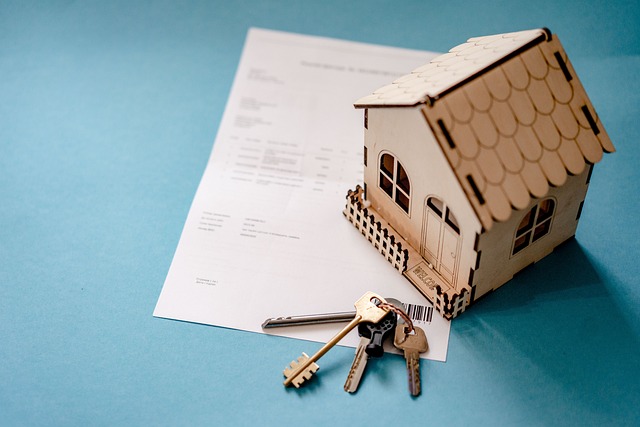The text provides a comprehensive guide on the effective implementation of an Address Occupant Lookup system. It stresses the importance of accurately collecting and verifying occupant data from diverse sources to ensure precision and compliance with privacy standards like GDPR and CCPA. The system relies on sophisticated matching algorithms enhanced by pattern recognition and fuzzy logic to link occupant information with their respective addresses, accounting for common anomalies. Regular maintenance post-lookup is crucial for data accuracy over time. A robust multi-source verification process that cross-references data with credible databases is recommended to validate identities and addresses. Security measures such as encryption, access controls, secure servers, and routine audits are essential to protect sensitive information and prevent cyber threats. The ethical and legal handling of personal data is paramount, ensuring informed consent, minimal data collection, and adherence to strict security protocols. This approach not only ensures operational efficiency but also builds user trust by maintaining high data hygiene standards and upholding ethical data management practices.
Address Occupant Lookup (AOL) is a critical tool in various sectors, from background checks to targeted marketing. However, its utility comes with risks that must be carefully navigated. This article delves into the essential aspects of AOL, providing a comprehensive guide on mitigating risks through understanding components, employing verification strategies, considering legal and ethical implications, and implementing technological safeguards. By the end of this exploration, readers will be equipped to handle AOL with prudence and precision, ensuring data accuracy and adhering to best practices in privacy and security.
- Understanding the Components of Address Occupant Lookup: A Risk Mitigation Guide
- Verification Strategies to Ensure Data Accuracy in Address Occupant Lookup
- Legal and Ethical Considerations in Implementing Address Occupant Lookup Systems
- Technological Safeguards for Secure Address Occupant Lookup Practices
Understanding the Components of Address Occupant Lookup: A Risk Mitigation Guide

When implementing an Address Occupant Lookup system, it is crucial to understand its intricate components to effectively mitigate risks associated with data accuracy and privacy compliance. The process begins with data acquisition, where information from various sources is collected and aggregated. This step necessitates rigorous verification processes to ensure the data’s integrity and relevance. Data accuracy is paramount; incorrect information can lead to adverse outcomes, such as failed deliveries or misinformed decisions.
Once the data is acquired and verified for accuracy, the next phase involves address matching algorithms that cross-reference occupant details with the provided address. These algorithms must be sophisticated enough to handle anomalies like address variations due to typos or differences in address formats. Risk mitigation strategies here include employing advanced algorithms capable of pattern recognition and fuzzy logic to account for such irregularities. Additionally, maintaining a robust data maintenance protocol post-lookup is essential to ensure that the information remains up-to-date and accurate over time. This ongoing commitment to data hygiene helps in maintaining trust and reliability in the Address Occupant Lookup system, safeguarding against potential risks associated with outdated or incorrect occupant data.
Verification Strategies to Ensure Data Accuracy in Address Occupant Lookup

To mitigate risks and ensure data accuracy in Address Occupant Lookup processes, it is imperative to implement robust verification strategies. One effective approach is to utilize a multi-source verification system that cross-references occupant information with multiple authoritative databases. This method helps to confirm the identity of individuals and the validity of their associated addresses. Employing up-to-date and comprehensive datasets from reliable sources, such as credit bureaus or government records, can significantly reduce errors and discrepancies.
Another critical aspect is maintaining a rigorous data hygiene practice. Regularly updating the database with fresh information, removing outdated entries, and correcting any inaccuracies are essential steps to maintain data integrity. Advanced algorithms and machine learning techniques can be leveraged to detect patterns of fraudulent activity or inconsistencies in occupant data. Additionally, incorporating real-time validation processes against postal service records can further enhance the accuracy and reliability of Address Occupant Lookup services. By prioritizing these verification strategies, organizations can minimize risks and ensure that the occupant data they rely on is both current and correct.
Legal and Ethical Considerations in Implementing Address Occupant Lookup Systems

When implementing an Address Occupant Lookup system, organizations must navigate a complex landscape of legal and ethical considerations to protect individual privacy while effectively serving their operational needs. Compliance with data protection laws such as the General Data Protection Regulation (GDPR) in Europe or the California Consumer Privacy Act (CCPA) in the United States is paramount. These regulations set clear guidelines on how personal information can be collected, used, and shared, ensuring that any Address Occupant Lookup respects individuals’ privacy rights.
Moreover, ethical considerations extend beyond mere adherence to legal standards. It involves making decisions that uphold the dignity and autonomy of the data subjects. This includes obtaining explicit consent before processing personal data, minimizing the collection and retention of data to what is strictly necessary, and implementing robust security measures to prevent unauthorized access or data breaches. By prioritizing these ethical and legal frameworks, organizations can responsibly deploy Address Occupant Lookup systems that serve their purposes while maintaining the trust of consumers and stakeholders.
Technological Safeguards for Secure Address Occupant Lookup Practices

When implementing Address Occupant Lookup practices, it is imperative to integrate robust technological safeguards to protect sensitive data and maintain user privacy. One such measure is employing advanced encryption methods to secure data transmission between databases and end-users. This ensures that personal information, including names, addresses, and other identifiable details, cannot be intercepted or deciphered by unauthorized parties. Additionally, access controls should be stringent, with multi-factor authentication required for any individual interacting with the lookup system. This minimizes the risk of unauthorized access and helps verify that only authorized personnel can retrieve and manage occupant data.
Furthermore, the use of secure server environments and regular security audits are crucial components in maintaining a secure Address Occupant Lookup process. Secure servers provide a protective layer against cyber threats, while regular audits help identify and rectify vulnerabilities before they can be exploited. Regular updates to software and systems ensure that the latest security patches are applied, mitigating the risk of system weaknesses being exposed. Adhering to compliance standards such as GDPR, CCPA, and HIPAA further solidifies the commitment to data protection and user privacy, making Address Occupant Lookup a secure and reliable tool for legitimate needs while effectively preventing data misuse or breaches.
When engaging with Address Occupant Lookup (AOL) systems, it is imperative to implement comprehensive risk mitigation strategies. This article has delineated the critical components of AOL, offered verification methods that guarantee data precision, and illuminated the legal and ethical frameworks necessary for its deployment. Additionally, the importance of technological safeguards in securing AOL practices has been emphasized. By adhering to these guidelines and best practices, users can confidently navigate the complexities of AOL, minimizing potential risks and ensuring privacy, data integrity, and compliance with regulations. A proactive approach to risk management within AOL will not only protect individuals’ information but also foster trust and reliability in this sophisticated tool.



